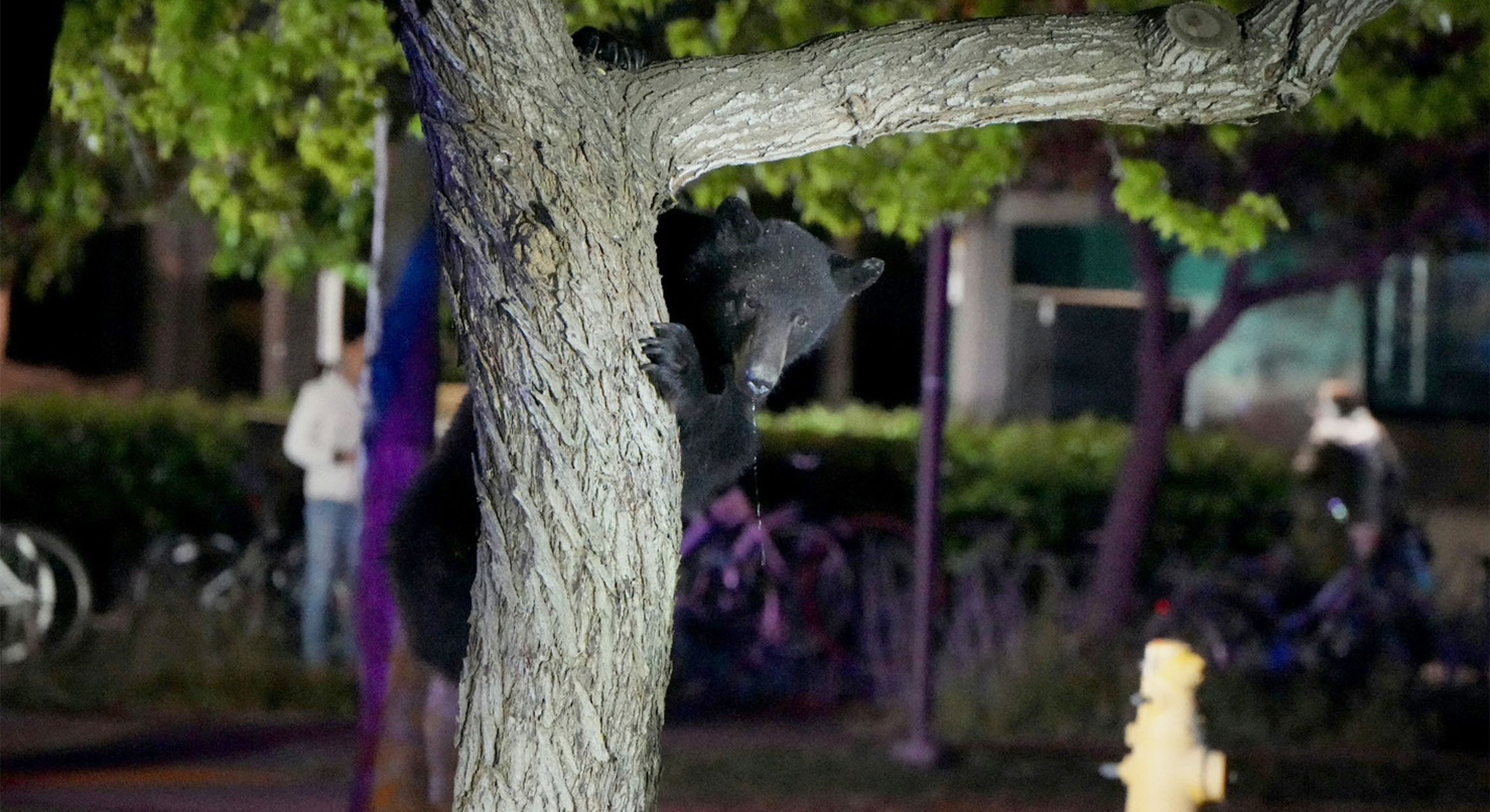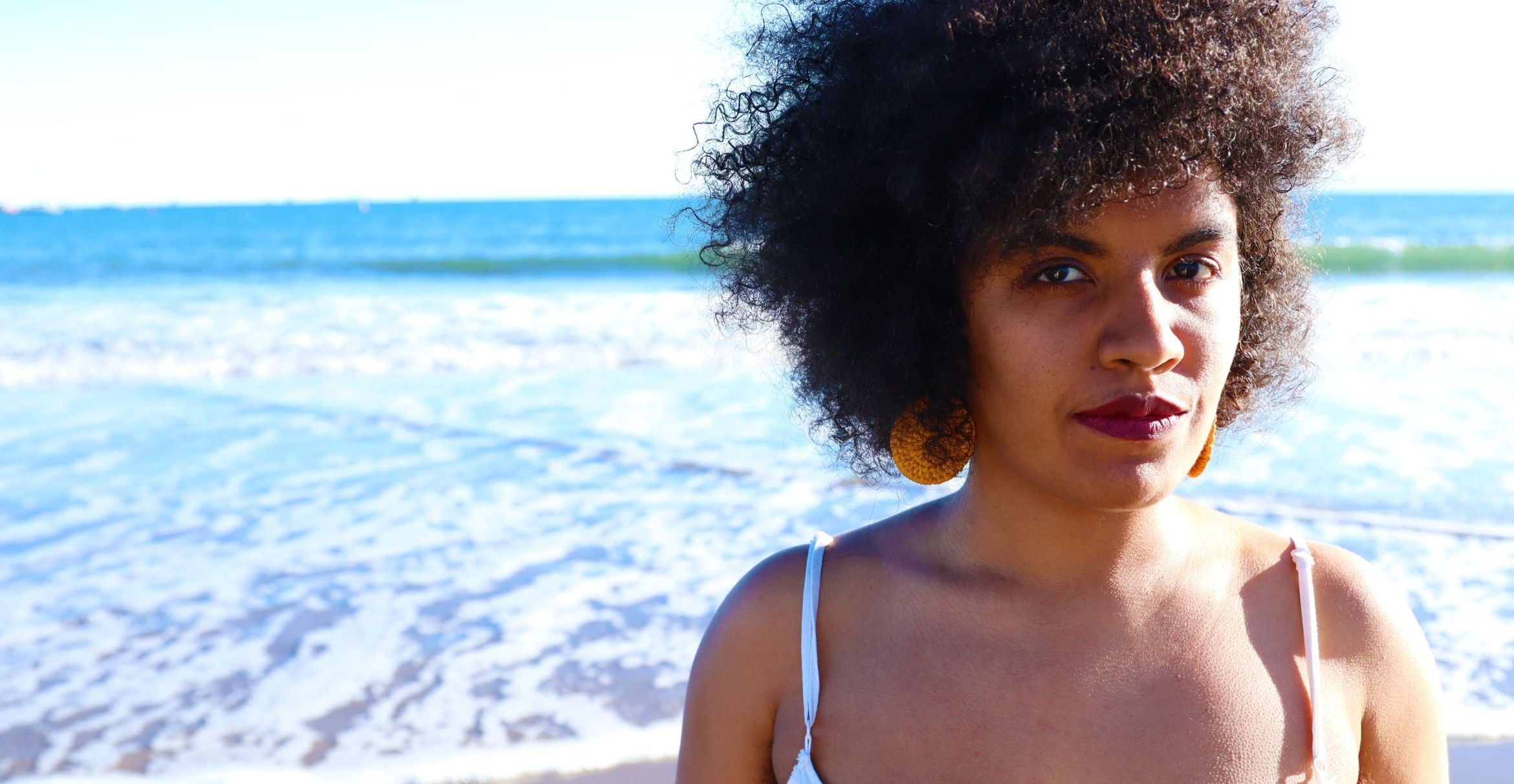
A series of recent black bear sightings has the UC Santa Barbara campus and surrounding community buzzing with news and social media coverage.
While the growing number of sightings — thought to be two bears over the past three weeks or so — is unprecedented in recent memory, it’s not unusual for black bears to explore busy urban and residential areas, especially this time of year.
“It’s spring,” said bear ecologist Rae Wynn-Grant, an affiliated researcher with UCSB’s Bren School of Environmental Science & Management. “In the lifecycle of a young bear in its second year of life, springtime is when it detaches from mom to figure out what territories it’s going to independently inhabit.”
Without knowing the age of the bears, Wynn-Grant said she would wager that both were yearlings that had recently set out on their own. “That’s my bet.”
“A yearling bear has never been alone before,” she said. “It may have never even encountered a coastline before. Animals of this age often make mistakes” and can become frightened and disoriented. They also have “an incredibly powerful sense of smell” that can pick up scents from a mile away, she added. They will often investigate appealing odors, for example, from beach detritus to whatever is wafting from campus dining halls.
A wildlife conservationist and ecologist specializing in large carnivores, Wynn-Grant is popularly known as Dr. Rae, the co-host of television’s “Mutual of Omaha's Wild Kingdom: Protecting the Wild” on NBC.
It’s important to remember, she said, that long before any humans arrived, grizzly bears roamed throughout California until they were hunted to extinction a century ago. Since then, black bears have moved in to fill that niche.
Wildlife conservation efforts are supported widely, she said, especially at UCSB and surrounding Santa Barbara communities. “But as soon as these animals inconvenience us, we often think that they are not supposed to be here.” In that sense, she added, as we improve and restore habitats and bring back more animals to the wild, “we’re often managing people, too.”
The first sighting, on West Campus, made the news in mid-April, when Wynn-Grant was with her television team filming alligators at Okefenokee National Wildlife Refuge in southern Georgia. On April 15, what was assumed to be the same bear was spotted between Kerr Hall and the bus circle. A few days later, more news and social media photographs placed the bear on the beach near More Mesa, heading east toward downtown Santa Barbara. On April 23, a dead bear was reported on Highway 101 near Padaro Lane in Summerland, approximately eight miles from downtown Santa Barbara; it’s not known if this was the same bear.
On May 8, while Wynn-Grant was speaking at the Environmental Media Association’s EMA IMPACT Summit in Los Angeles, there were several reports of a bear in the area around Devereux Slough, Isla Vista Elementary School and West Campus.
“Second black bear on campus . . . and I’m far away,” Wynn-Grant posted on social media, punctuated with the loudly crying face emoji.




